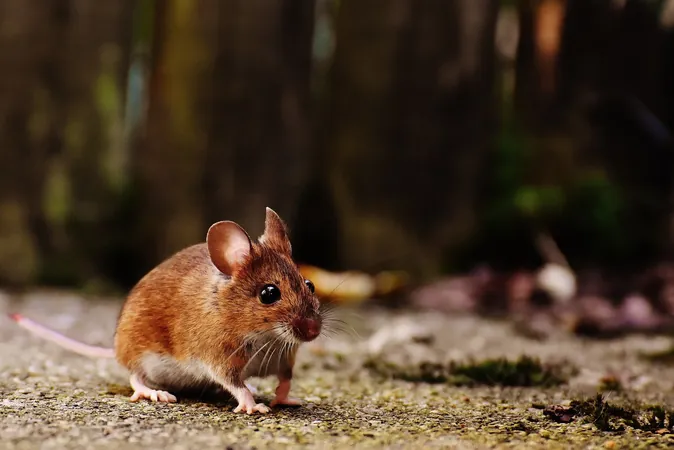
Mice Decode Social Hierarchy Using Chemical Signals: A Groundbreaking Study Reveals
2025-05-19
Author: Arjun
Unlocking the Secrets of Social Dynamics in Mice
In an eye-opening study conducted by researchers at the prestigious Francis Crick Institute, it has been revealed that mice possess the remarkable ability to discern the social ranking of their peers through chemical signals, particularly odors. This newly discovered method allows these small creatures to navigate their social worlds more effectively and adapt their behavior accordingly.
The Social Structure of Mice: More Complex than You Think
Just like many mammals, mice exist within a complex social hierarchy. This structure not only helps minimize conflict but also plays a crucial role in establishing breeding partnerships. While prior theories suggested fixed behaviors or physical traits could indicate status, fresh evidence paints a different picture.
An Innovative Experiment to Understand Rank Recognition
The Crick Institute team devised an intriguing experiment involving male mice in a transparent tube. When two mice confronted each other, the more submissive one was likely to back down—an interaction that provided insights into social ranking. By analyzing interactions within familiar cages, the researchers ranked the mice, then observed how they reacted to unfamiliar rivals.
Sniffing Out Dominance: How Mice Recognize Rank
Surprisingly, the study found that even in darkness, mice maintained their ability to recognize social ranks, suggesting that physical appearances or typical behaviors play a minimal role in their calculations. They weren't swayed by factors like size or even the lack of sex hormones, indicating a deep-rooted chemical communication system at play.
The Power of Chemical Senses: A Dual System for Rank Recognition
In a groundbreaking twist, the researchers discovered that both of the mice's chemosensory systems—one that detects airborne odors and another for chemical signals through direct contact—work in tandem. Only when both systems were blocked did the mice struggle to identify rival ranks, underscoring the importance of these chemical signals in social interactions.
Human Parallels: Can We Learn from Mice?
Much like mice, humans also gauge social status through various sensory cues, such as language, facial expressions, and attire. This connection highlights fascinating parallels in how both species navigate their respective social landscapes.
Looking to the Future: Investigating Neural Mechanisms Behind Decisions
Next, the researchers aim to explore the brain regions involved in processing information related to both personal and comparative social ranks, ultimately influencing decisions to confront or retreat. Neven Borak, a key contributor to the study, emphasized the significance of understanding how mice assess their peers without extensive prior encounters.


 Brasil (PT)
Brasil (PT)
 Canada (EN)
Canada (EN)
 Chile (ES)
Chile (ES)
 Česko (CS)
Česko (CS)
 대한민국 (KO)
대한민국 (KO)
 España (ES)
España (ES)
 France (FR)
France (FR)
 Hong Kong (EN)
Hong Kong (EN)
 Italia (IT)
Italia (IT)
 日本 (JA)
日本 (JA)
 Magyarország (HU)
Magyarország (HU)
 Norge (NO)
Norge (NO)
 Polska (PL)
Polska (PL)
 Schweiz (DE)
Schweiz (DE)
 Singapore (EN)
Singapore (EN)
 Sverige (SV)
Sverige (SV)
 Suomi (FI)
Suomi (FI)
 Türkiye (TR)
Türkiye (TR)
 الإمارات العربية المتحدة (AR)
الإمارات العربية المتحدة (AR)